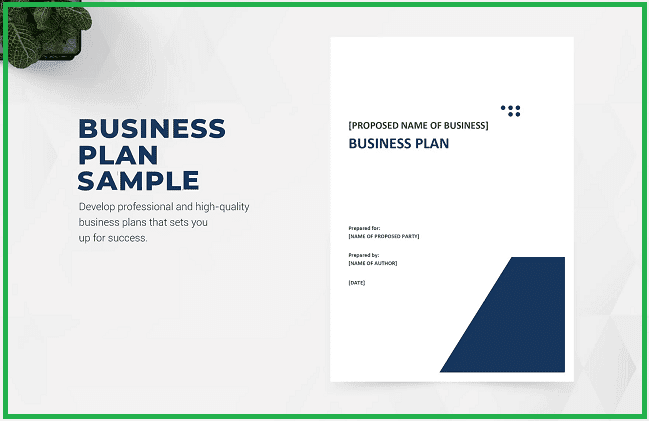Personal Business Plan Sample: A Small Business Guide

Creating a personal business plan sample is an imperative first step for anyone wanting to start or expand their own enterprise. It is essentially a guide that can shape some of objectives, tactics and what needs to be taken in order for those goals to become reality. Having a business plan can help you avoid https://galibkishayari.in/ common pitfalls and it will hold your feet to the ground during challenging moments. In this article, I will include a full version of the personal business plan sample with special focus on gender-neutral language and readability.
Why You Need a Personal Business Plan
A personal business plan is more than a document. It’s a strategic tool that will help you:
- Personal Vision: What you want to be; what are your hopes for the future and how do they align with where your business is going?
- Realistic Goals: Divide the vision into achievable, actionable goals.
- Engage Stakeholders: Convince potential investors, partners or stakeholders to root for your plan.
- Keep an Eye: Watch your performance very carefully and adjust things if you see some positive deviations.
Part of a Personal Business Plan
The usual list of components in a well-drafted personal business plan
Executive Summary
The Executive Summary is a summary of your business plan. Brief: Intro will describe what you are trying to do in your plan; it will provide a brief overview of the main points. This section should include:
- Business Name: Include the name of your business or proposed name.
- Mission Statement: Goals- Measurable objectives that you want to accomplish
- Objectives: Short description of Products/Services
- Brief Description: A short description of your products or services.
Business Description
Details Feature — A more comprehensive description of your business. It should cover:
- Business Structure: Specify is this a sole proprietorship, partnership or corporation else llc.
- Business Location: This includes where your business is or will be located.
- Business’s history: (For existing business)
- Market Needs: Detail the problem your business solves and how your product or service fills that need
Market Analysis
Performing market analysis: You will learn about your industry, target customers, and competition by carrying out this activity. This section should include:
- Market Summary: Market trends, growth potential and outlook on your industry.
- Target Audience: Identify the demographics, preferences and purchasing behavior of your target market.
- Competitive Analysis: Tag who your main competitors are and analyze what they do better and worse than you
- Market Strategy: Detail how you will acquire and retain customers.
Organization and Management
Provide an overview of your organizational structure and management team. This section should include:
- Illustrated Organizational Chart
- Role and responsibilities: You have to clarify roles of the members.
- The team: Brief bios of key management personnel that articulates their experience and value they bring to this startup.
Products or Services
What do you offer your clients-products/services? This section should cover:
- Product/Service Description: Describe products/services in detail.
- Your Unique Selling Proposition (USP): What makes you different from your product/services offerings?
- Technical: The technical platform that you have builtLifecycle: Lifecycle of your product/service from development to market introduction.
- Research and Development (R&D): Current or possible future R&D efforts Research and Development (R&D)
Marketing and Sales Strategy
Present your marketing and sales strategies, e.g.
- Marketing Plan: Marketing strategies you can use for promoting your product or service online and offline.
- Sales Strategy: How you sell your products/services such as sales processes and channels.
- Pricing Strategy: Cost of your product or service.
- Promotion Strategy: Advertising, public relations and promotional tools.
Funding Request
If You Need Funding Specify a funding requirement section which should include details such as;
- Amount Needed: The dollar amount your business needsQDebug
- Funding Purpose: What the money will be used for.
- Future Funding Needs: There may be direct and/or future funding needs.
- Funding Sources: Who could potentially fund you, e.g. investors, loans or grants
Financial Projections
Financial Projections for Your Business Details on your business charges and Viability This section should include:
- An Income Statement: Projects income statement for a minimum of the next three years.
- Cash flow statement: Projected cash flow statement for a minimum of three years.
- Balance Sheet: This is where you’ll project your balance sheet, for at least the next three years.
- Break-Even Analysis: Breaking the point where your business will begin to be profitable.
Appendix
Include any other information that supports your case for the proposed business, such as:
- Resumes: Key personnel resumes.
- Business Licensing/Permits: A copy of legal documents.
- Product Images: Images of your products or prototypes.
- Market Research: Comprehensive market research data & analysis
An Inclusive Language in Your Business Plan
In order to be as respectful and accessible among all their readers, it is important that the business plan you write should contain inclusive context. Here are a few ways to weave in inclusive language:
Avoid Gendered Language
Find different ways to say this and avoid using identifying pronouns such as “he” or she — opt for gender-neutral term like they instead. Example: Say, “Each manager should submit their report,” and not “He/the (singular) manger….”
Use Person-First Language
Really focusing on the inner person instead of features. For instance, use “person with a disability” instead of disabled person.
Be Culturally Sensitive
Eliminate any terms or phrases that may be culturally inappropriate. Use language that does not offend or disrespect members of other cultures.
Promote Accessibility
Avoid using jargon and big words that others might not understand, keep your plan simple for a wider group of people to be able to read it.
Sample Personal Business Plan
Let us take a simple personal business plan example to help you in creating your one:-
Executive Summary
Business Name: Eco-Friendly Clothing
Mission: To offer premium sustainable, ethically made clothes
Objectives: Benefit from $500,000 in the first year and increase online presence within two years More Information
Brief Description: Top Eco-Friendly Apparel delivers a number of items; eco-friendly clothes made out of natural materials and also re-cycled components.
Business Description
Business Structure: LLC
Location of Business: Austin, TX
Market Wants More sustainable and ethically produced clothing.
Market Analysis
Review: Driven by consumer’s need for eco-friendly products the sustainable fashion industry is growing.
Who is your target market: Environmentally aware 18–45 year old consumers.
Competition and Market: Patagonia, Everlane. The one thing that makes us different is the realizes on our promise of affordability and disclosing it in advance.
Organization and Management
Entity: CEO, Marketing Manager, Operations manager + sales team.
Operating Team: CEO -Jane Doe, Soap industry for 10+ years.
Products or Services
Description: Men’s and women’s clothing from organic cotton and recycled polyester.
Note: Value for money Trendy, fashionable and sustainable clothing.
Marketing and Sales Strategy
Marketing Plan: Social media marketing, influencer partnerships and environmentally-friendly events.
Sales Strategy: Online, pop-up shop and collaboration with other sustainable retailers.
Pricing Strategy: Competitively priced to quality ratio and Value Proposition.
Funding Request
Amount Needed: $200,000
Use of Funds: Product development, marketing and initial inventory.
Any external funding needs for future: Likely to be minimal if they will expand their retail only.
Financial Projections
Revenue of $500,000 in the first year of operations (Projection on an Income Statement)
Cash Flow Statement: Expects Cash flow to be positive in Q2
Balance sheet (Assets: inventory, equipment and cash):
Expected to be pushing six months break-even.
Appendix
Resumes : Resumes of key team members.
Product Images– The images of our cloths
Market research: In-depth study of market trends and costumer action.
Conclusion
Having a personal business plan sample is critical to any aspiring entrepreneur who wants to build their own sustainable company. By following this guidance and by writing the plan in a more inclusive manner, you will have something practical to work with effectively. This example should provide a strong model to give you ideas of how your own proposal may look and the sort of approach that will suit your unique business perspective.




